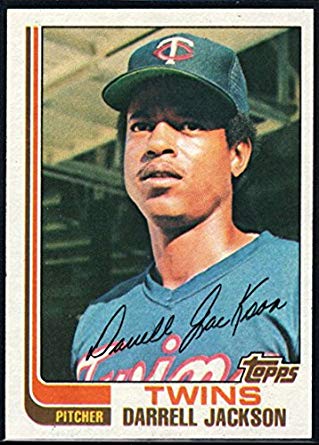In the aftermath of the overdose of Tyler Skaggs, writer Toni Reveles explores how America’s opioid epidemic claimed an Angel who shined on the diamond.
Following the recent overdose death of Angels pitcher Tyler Skaggs, no one needed to remind Darrell Jackson that drug addiction has a long, complex history in America’s professional sports.
He recalls that time in 1977 when fans cheered as he walked to the mound, drunk and high on cocaine, which was the drug of choice in that era. Nobody but him seemed to notice, perhaps because he was throwing strikes.
In the 42 years since then, he knows that the drugs have repeatedly changed, but addiction remains for high-performing, high-pressure athletes who often seek medication to sleep or buffer their physical pain. Synthetic opioids, like those blamed for the death of Skaggs, block pain, which makes them useful to people healing from serious injuries or surgeries.
“We’re the last person to know we lost control, if we can control it we wouldn’t have a problem," says former Minnesota Twins pitcher Darrell Jackson.
Daryl Davies, a professor of Clinical Pharmacy at the University of Southern California, notes that such drugs were originally listed as non-addictive. “[Opioids] were marketed in this country as being safe and non-addictive, this was going to be the huge breakthrough. But what made it an epidemic is the bizarre marketing by companies like Purdue Pharma,“ Davies says.
Purdue Pharma is the maker of OxyContin, the pharmaceutical that sparked an opioid epidemic. The company has been sued by more than 2,300 families for part of the human toll that has become known as “the opioid crisis.”
The New York Times reported in September that Purdue Pharma settled and will be forced to file bankruptcy and pay $3 billion dollars to the families. The settlement does not require Purdue Pharma to admit wrongdoing.
But the scale of the problem is much greater. According to the Centers for Disease and Prevention , more than 60,000 annual deaths are blamed on synthetic opioids. One of them was Skaggs, a rising star for the Los Angeles Angels who grew up in Southern California.
Skaggs was drafted in June 2009 by the Angels and traded to the Arizona Diamondbacks a year later. He eventually found his way back to the Angels organization in 2013 before suffering an injury to his elbow the following year. This led to “ulnar collateral ligament reconstruction,” better known as Tommy John surgery.
Andrew Saldivar, a physical therapist at USC, says the injury itself is painful, but that it is little different from any other surgery. “It could be painful, that’s one of the signs, pain on the inside of your elbow, and having the surgery. It just depends on their pain tolerance,” he explains.
While an investigation continues, there are indications that Skaggs addiction played a key role in his death.
On July 1st, 2019, Skaggs was found in his hotel room unconscious with in his system, which led to him choking on his own vomit, according to the Los Angeles Times. “Alcohol is a major depressant, so it depresses breathing etc. [Opioids] are major depressants. You put them together and you just multiply the depressant activity,” says Davies.
Overall synthetic opioid deaths in California have decreased, but according to new data released by the California Department of Public Health , deaths by fentanyl have risen from 2014 to 2018 by 614 percent. In Los Angeles County, there was a 12-fold increase in that same time period.
Why has fentanyl become so damaging?
Davies simply says the answer is partly that it is an affordable way to kill the pain. “Fentanyl is dirt cheap right now, it gives them the high that they were experiencing with oxycontin, but they don’t know the dosage that’s been spiked with fentanyl, which leads to respiratory failure and death, unfortunately,” Davies said.
“Some athletes start on legal oxycontin because they had a sports injury; they’re taking the oxycontin for the pain. They want to get out on the field as fast as possible so they’re pushing the envelope, might be taking a little too much,” he said.
“Then they go out to a party and they drink a little alcohol on top of this and they get this unbelievable buzz. It’s highly euphoric. Then it goes away so they take a little bit more, and then all of sudden it gets discovered by blood test or the sports program, and then they transfer from the prescription oxycontin to the street heroin, switch is spiked with fentanyl.”
After Skaggs untimely death, it was reportedly revealed that the Angels’ organization knew about his addiction, but didn’t do anything to help.
Despite Darrell Jackson’s own serious addiction problems early in his baseball career, his story had a very different ending.
Drafted right after high school when he was just 17 years old, he needed his father’s permission to sign a contract with the Minnesota Twins. His father insisted the baseball prodigy attend college instead, in case baseball didn’t work out, and Jackson did, on a scholarship.
In Jackson’s senior year at Arizona State University, his team made it the college world series, where they won.
He was drafted again by the Twins and went on to play AA baseball. One day his manager called him and told him he’s going to Detroit, he knew that meant he was going to the big leagues, “I cried like a baby and just hugged him.”
Jackson had already been drinking, smoking cigarettes and marijuana, but when he made it to the big leagues in the 1970s, he discovered a different world.
“We got introduced to a drug called cocaine. It was a drug, like cigarettes, wasn’t considered a dangerous drug, it was a drug used by high-class rich people,” Jackson says.
“Being the alcoholic I was and having the tendency to pass out, cocaine helped me stay awake. It also gave me a false sense of security where I felt I was extremely strong, that euphoric high that it gave me, and I really thought it made me a better pitcher. So I would use it before I got to the mound.”
He would sometimes ingest cocaine during games as well—“just go in the restroom and go into the stall and snort it.”
Jackson has now been sober for 33 years, and is using his "10-20 Club" to talk to the young people, ages 10 through 20, and emphasize the importance of staying sober.
Mary Andres, a licensed clinical psychologist, says addiction for athletes is often hard for them to spot because the definition of an addict is someone who continues to use drugs in spite of consequences. But for somebody with money and fame, they are often able to make consequences go away.
“They don’t call it an addiction because they don’t recognize loss of control. They feel like they have a lot of control of a lot of areas in their lives, and they feel like they deserve it,” Andres says.
Jackson says, "Being an athlete, that’s what we did — we did drugs."
Looking back, Jackson believes that an unfortunate injury may have saved his life—at least in an era when the most deadly drugs weren’t for pain relief.
Jackson points to a problem in a sort, where men earn huge amounts of money and are capable of garnering almost limitless fame, explaining that nobody ever said anything to him about his addiction. “As long as you are out there winning games and stuff nobody really cares what you do off the field,” he says. “It’s like any other job, as long as you show up to work on time and do your job, nobody really bothers you."
“It’s a very enabling sports, professional sports, as long as you’re out there winning games, they will continue to pay you,” Jackson said.
Of Skaggs, Jackson says, “It’s really sad knowing what I know, [that] there is a solution, that he didn’t have to die that way if he could have got help. Somebody like me could have talked to him and let him know where he was headed. But that’s a drug addict’s thing: ‘It isn’t going to happen to me.’”

